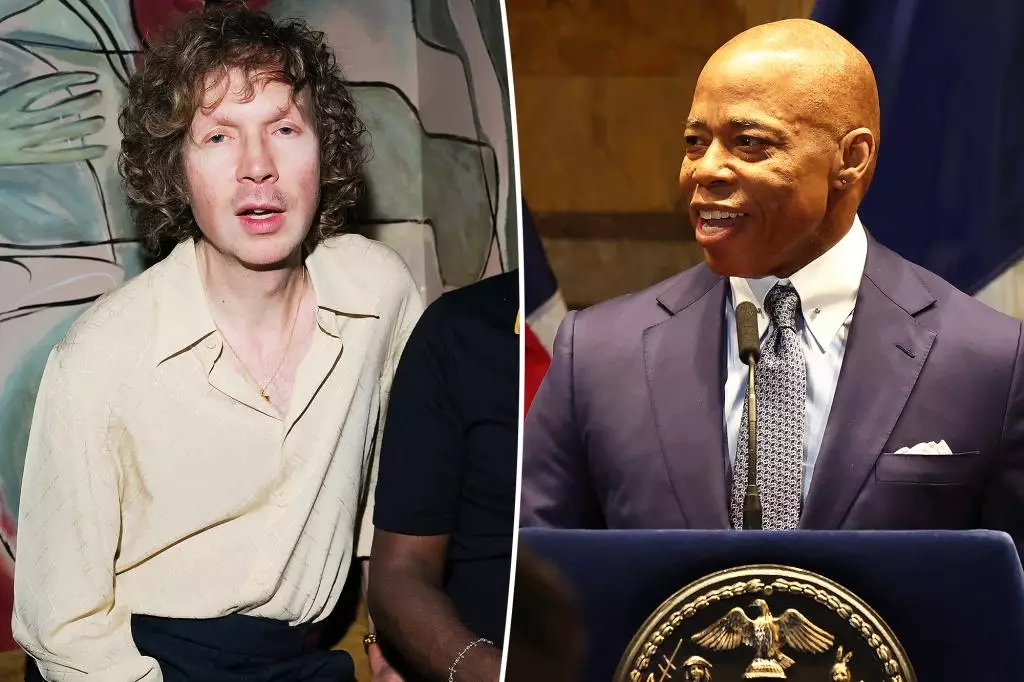After a short hiatus from the limelight due to an undisclosed health issue in late January, Mayor Eric Adams has emerged back into New York City’s vibrant nightlife scene. His absence raised eyebrows and sparked speculation among citizens and political analysts alike about the implications of his health and well-being. Yet, his recent reappearance has rekindled excitement about the mayor’s role as a relatable public figure, especially in a city that thrives on social engagements and cultural events.
Contrary to expectations, Adams didn’t opt for his regular nightlife staples like Zero Bond or Casa Cipriani, which have long been favorites among the elite. Instead, the mayor surprised many by choosing Mulberry, a trendy bar located in Nolita, known for its celebrity clientele and intimate cocktail experiences. This choice signifies a shift not only in his personal social preferences but also may reflect a strategic aim to connect with a wider demographic of New Yorkers. Situated in an area that attracts a younger, fashionable crowd, Adams’ decision to land at Mulberry aligns with an increasingly modern image that appeals to both residents and potential visitors to the city.
Mingling with the Stars
While at the Mulberry, eyewitness accounts described Mayor Adams engaging in his typical “mayoral duties,” showcasing his charismatic personality by smiling and mingling with fellow patrons. This indicates that his return to social festivities is not merely for political optics, but also reflects an authentic desire to maintain a connection with the fabric of the city’s culture. Notably, Adams partook in this social atmosphere right after attending a private dinner at Harry Cipriani, seamlessly transitioning from formal events to the lively buzz of a chic bar.
Cultural Significance in a Post-Pandemic Era
The timing of Adams’ comeback to the nightlife scene holds added significance as cities like New York continue to recover from the impacts of the COVID-19 pandemic. Public figures engaging in vibrant social settings can serve as vital catalysts for restoring normalcy and revitalizing local economies. His presence at night spots frequented by A-listers such as Beck and Brad Pitt reinforces the mayor’s role in promoting not only the city’s nightlife but also its standing as a cultural hub.
Moreover, the intersection of Adams’ social reintroduction with simultaneous events such as Christian Siriano’s late-night party illustrates the pervasive influence of culture in political life. Artists like Beck, who was also in attendance that night and is scheduled for a performance at Bowery Ballroom, represent the integration of creative endeavors in the civic narrative. New York City thrives on synergies between arts, entertainment, and politics, and Adams’ reengagement with these sectors is an essential component of fostering community spirit.
Mayor Eric Adams’ return to nightlife at a hotspot like Mulberry suggests a calculated and refreshing approach to leadership, demonstrating an effort to blend his role as a politician with the pulsating culture of New York City. As he weaves through social landscapes, he reaffirms the importance of connection, community, and artistic expression in times that demand both leadership and camaraderie.


Leave a Reply